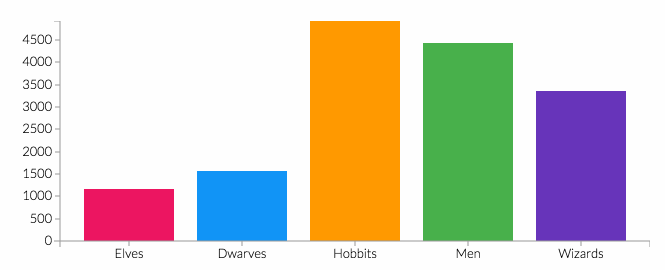Reading Literacy Movement in Elementary School / Gerakan Literasi Membaca di Sekolah Dasar
(1) Universitas Islam Negeri Maulana Malik Ibrahim Malang, Indonesia
(2) Universitas Islam Negeri Maulana Malik Ibrahim Malang, Indonesia
Copyright (c) 2020 Al-Mudarris: Journal Of Education
Full Text:
 / Language : id
/ Language : id
Submitted : 2020-03-31
Published : 2020-04-30
Abstract
The purpose of this study is identifying the problematics the implementation of the Reading Literacy Movement in Primary Schools. The approach in this research is qualitative with descriptive type. Data collection techniques in this study used observation, interviews, and documentation. This research was conducted at SDN X in Malang City. The results showed that the problem of the Reading Literacy Movement at SDN X in Malang was divided into 3 categories, namely the 15 minute reading habit, with the problem of reading and writing skills and the ability to understand student reading, limited reading time, low motivation and interest in reading. At the facility and facility enrichment stage category, with the problem of the availability various books in the library, limited reading areas, reading angles, and literacy posters. The category of supporting resources, with the problem of reading literacy climate, teachers and literacy reading teams, parental and community support.
Keywords
References
Awaluddin, T. (2010). Potret Mutu Pendidikan Indonesia Ditinjau dari Hasil-hasil Studi Internasional. Jakarta: UNJ.
Benson, V. (2002). Shifting paradigms and pedagogy with nonfiction: A call to arms for survival in the 21st century. New England Reading Association Journal, 38(2), 1.
Bracken, S. S., & Fischel, J. E. (2008). Family Reading Behavior and Early Literacy Skills in Preschool Children From Low-Income Backgrounds. Early Education and Development, 19(1), 45–67. https://doi.org/10.1080/10409280701838835
Caldwell, J. S. (2008). Comprehension assessment: A classroom guide. Guilford Press.
Djojonegoro, W. (2016). Sepanjang Jalan Kenangan. Gramedia.
Harp, B., & Brewer, J. A. (2004). The informed reading teacher: Research-based practice. Prentice Hall.
Hornby, A. S., & Cowie, A. P. (1995). Oxford advanced learner’s dictionary (Vol. 1430). Oxford university press Oxford.
Kintsch, W., & Kintsch, E. (2005). Comprehension. In Children’s reading comprehension and assessment (pp. 89–110). Routledge.
Kusuma, C. S. D. (2017). Counteract Hoax Through Reading Interest Motivation. 21.
McGee, L. M., & Morrow, L. M. (2005). Teaching literacy in kindergarten. Guilford Press.
Miles, M. B., & Huberman, A. M. (1994). Qualitative data analysis: An expanded sourcebook. sage.
Miller, J. W., & McKenna, M. C. (2016). World literacy: How countries rank and why it matters. Routledge.
Musfiroh, T., & Listyorini, B. (2016). Konstruk kompetensi literasi untuk siswa sekolah dasar. Litera, 15(1).
Nopilda, L., & Kristiawan, M. (2018). Gerakan Literasi Sekolah Berbasis Pembelajaran Multiliterasi Sebuah Paradigma Pendidikan Abad Ke- 21. JMKSP (Jurnal Manajemen, Kepemimpinan, Dan Supervisi Pendidikan), 3(2), Article 2. https://doi.org/10.33369/jmksp.v3i2.1862
Owusu-Ansah, E. K. (2004). Information literacy and higher education: Placing the academic library in the center of a comprehensive solution. The Journal of Academic Librarianship, 30(1), 3–16.
Park, Y. (2008). Patterns in and predictors of elementary students’ reading performance: Evidence from the data of the Progress in International Reading Literacy Study (PIRLS). Michigan State University.
PB, T. R. K. (2008). Kamus Besar Bahasa Indonesia (Edisi Keempat). Jakarta: Pusat Bahasa Departemen Pendidikan Nasional.
Publications—PISA. (2018). https://www.oecd.org/pisa/publications/
Rahmasari, A., Aruan, N., Hari Susanto, S., & dkk. (2019). Prosiding Temu Ilmiah Nasional Balitbang Tahun 2019 “Percepatan Pengembangan Desa Mandiri.†Badan Penelitian Dan Pengembangan Provinsi Jawa Timur.
Santrock, J. W. (2007). Perkembangan anak. Jakarta: Erlangga, 3.
Soekirno, S. (1996). Memberdayakan Perpustakaan dan Budaya Baca Indonesia. BACA: JURNAL DOKUMENTASI DAN INFORMASI, 21(3–4), 26–29. https://doi.org/10.14203/j.baca.v21i3-4.280
Sonnenschein, S., & Munsterman, K. (2002). The influence of home-based reading interactions on 5-year-olds’ reading motivations and early literacy development. Early Childhood Research Quarterly, 17(3), 318–337.
Suryaman, M. (2015). Analisis Hasil Belajar Peserta Didik dalam literasi Membaca Melalui Studi Internasional (PIRLS) 2011. LITERA, 14(1). https://doi.org/10.21831/ltr.v14i1.4416
Wiedarti, P., Indonesia, & Direktorat Jenderal Pendidikan Dasar dan Menengah. (2018). Desain induk gerakan literasi sekolah.
Yosef, L. G. (2017). Pelatihan 4M (Melihat-Menyusun-Mengeja-Membaca) untuk Anak Slow Learner. Jurnal Psikologi, 8(1).
 Article Metrics
Article Metrics
 Abstract Views : 942 times
Abstract Views : 942 times
 PDF Downloaded : 565 times
PDF Downloaded : 565 times
Refbacks
- There are currently no refbacks.

This work is licensed under a Creative Commons Attribution-ShareAlike 4.0 International License.








